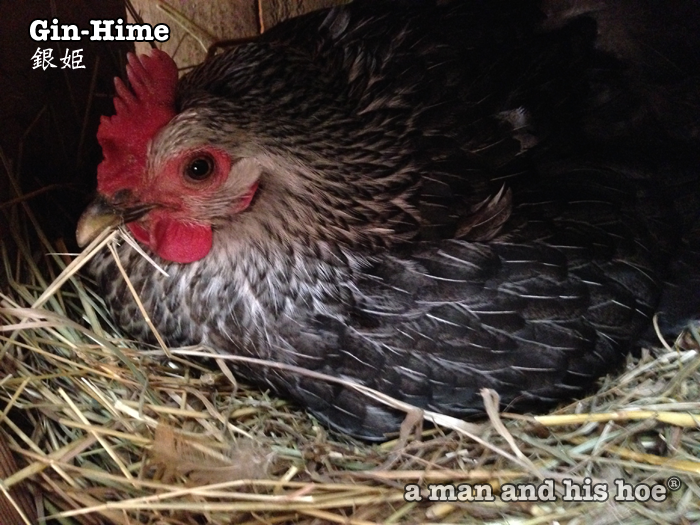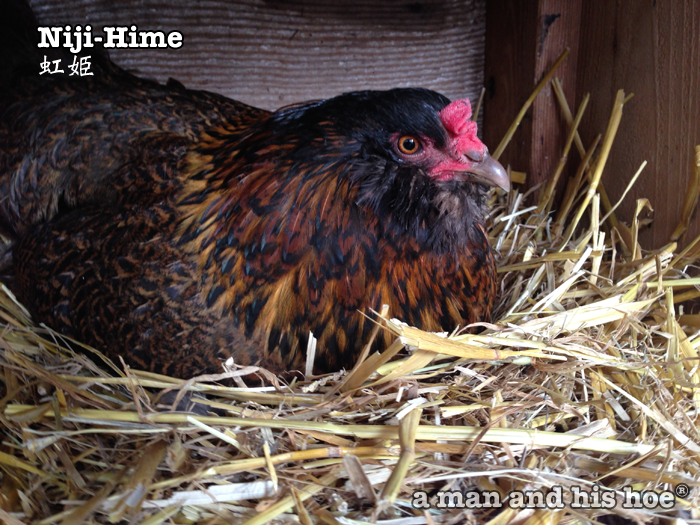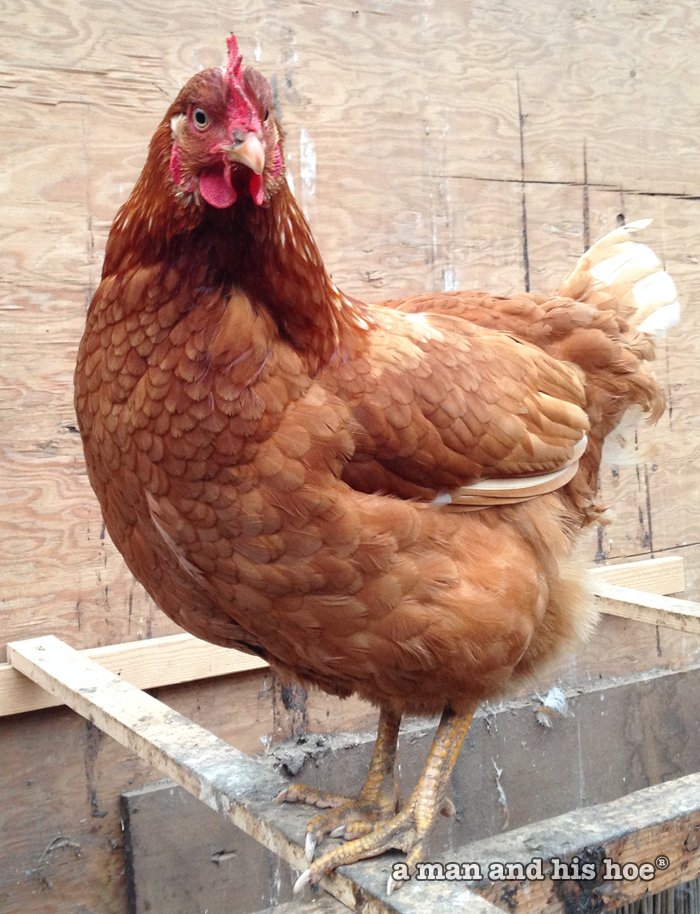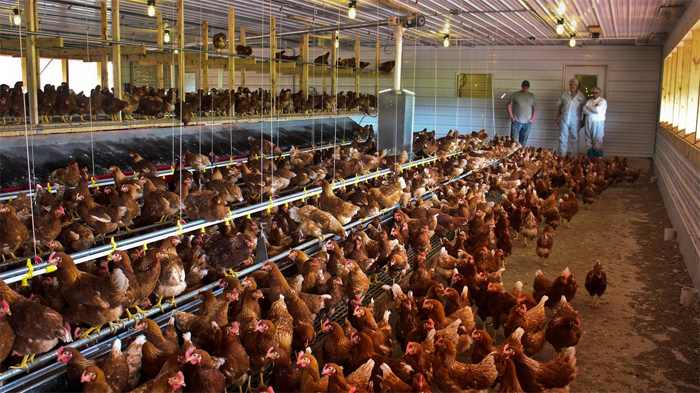Here are more of the wonderful crew at a man and a hoe®. Each hen is special. Each hen has her favorite nest. Each hen has her favorite rooster. Each lays a unique egg. Here at a man and a hoe®, each hen is treated with the love and respect they deserve.



Category: About My Chickens
-
More of the Crew
-
Treating Chickens Humanely – Who Laid Your Egg?
If we eat eggs, chicken, or other animals, we are all concerned about how they are raised. But it’s impossible to go visiting all the farms which produce our food, especially when we live in cities long distances from the farms. And often, it’s not clear exactly which farm raised the egg, dairy, and meat products we are buying.
 So we rely on others to monitor the farms and let us know if they are treating their animals humanely. One such organization is Humane Farm Animal Care (HFAC). To help consumers pick products which are humanely raised and handled, they have developed a Certified Humane label, farms and producers can place on their products. According to their webiste:
So we rely on others to monitor the farms and let us know if they are treating their animals humanely. One such organization is Humane Farm Animal Care (HFAC). To help consumers pick products which are humanely raised and handled, they have developed a Certified Humane label, farms and producers can place on their products. According to their webiste:The goal of the program is to improve the lives of farm animals by driving consumer demand for kinder and more responsible farm animal practices.
This sounds fantastic, but I was wondering what they consider to be a humane way of treating chickens. So I went to their standards page where they list their standards. They have separate standards for beef cattle, broiler chickens, laying hens, dairy cows, goats, pigs, sheep, turkeys, young dairy beef, and bison.
Their broiler chicken standards has rules for feed, water, buildings, floor and litter, lighting, space allowance, thermal environment and ventilation, environmental enrichment, free-range, provisions for chicks, as well as standards covering management, health care practices, transportation, and processing.
Many of the standards seem fine, however when it comes to the space allowance, they consider giving 1 square foot for ever 6 pounds of chicken to be humane. This works out to about 1 and a half to 2 square feet per chicken. If I was purchasing a chicken which had a Certified Humane label, I would expect that it be raised in a much less crowded condition.
HFAC allows housed laying hens to be kept in even more crowded conditions. Depending on the type of housing, acceptable densities range from just 1 square foot per hen to 1.5 square feet per hen. In a hundred square foot area (a small 10 by 10 foot bedroom) HFAC will accept putting 66 to 100 hens. It boggles my mind how this could possible be considered humane treatment of laying hens.
For pastured hens, HFAC allows farmers to raise 1,000 chickens on 2.5 acres, or 400 chickens per acre. For free range hens, HFAC’s minimum outdoor space is just 2 square feet per hen.
Are these standards truly humane?
Ever wonder what the hens look like which laid your a man and a hoe® eggs? Here are photos of a few of the egg layers here.




-
Chance to Be Alone

At a man and his hoe® chickens have plenty of chances to be alone. It’s early spring, the robins are back and the frogs’ chorus at night is almost deafening. The hens are just starting to go broody, with the first clutch scheduled to hatch around March 26. By mid summer, there will be up to a hundred new chicks running about with their mothers. Now is the time for chickens to have time alone.
In the space where a typical chicken farm will have 3,000 chickens, I have one. In a single hour, a chicken here will walk a greater distance than chickens in most farms walk during their entire short six to ten week lives.
You can either buy chickens which have plenty of chances to be alone, or buy chickens which never experience a single moment on their own.

-
Her Nest

Each hen has her favorite nesting spot. Some hens stick to using the same nest for months. Other hens switch nests daily, weekly, monthly. No two hens are exactly alike. In any case, I’ve never met a hen which did not like to move a lot every day. Not just a few steps, but huge distances. When you take into account their size in relation to a human’s, it would be like a human walking five to ten miles a day. Chickens are on the move much of the day, and cover vast distances in a short time.
So I wonder what happens to the mental state of a hen in a cage. She’s imprisoned and has to use the same spot day in and day out. Most hens in an egg laying operation don’t even have a nest. They are trapped in a metal cage with no straw, no bedding. Their feet only touch metal their whole lives. As soon as they lay their egg, it rolls out of the cage and is whisked away on a conveyer belt.
What is it like for a hen to live in a metal box her whole life and never experience nestling into a comfortable straw nest? What is it like to see her eggs go rolling away? My guess is that most hens trapped in these egg laying factories develop severe mental problems. They aren’t designed to be treated in such a way. Even though they have very tiny brains, they still have many needs, and very few of those needs are ever met in a metal cage. How does this affect the quality of the eggs these hens lay? I’ve never found a store egg to have the vibrancy of my eggs. What are the effects of most people eating such poor quality eggs?
Perhaps it is time for food consumers to be more concerned about the quality of the food they buy, and the impact their food choices have on the well being of the animals producing their food. As I often say, that egg, that meat, those vegetables you eat are going to become you. Do you want your body to build your bones, skin, organs, with poor quality, ho-hum materials or with superb materials?
-
Survivor: Chicken 1 – Coyote 0
Looking at her today, you’d never guess that three days ago she survived a coyote attack. She was on the other side of the pond, scratching through the brush, when a coyote tried to nab her. The two guard dogs raced to her rescue and chased the coyote away. I went a long way into the forest after them. I never did see the coyote, just heard it tussling with the dogs.
The hen was in shock and I carried her back to the chicken yard and put her in a small barn to recover. What saves these birds often is their feathers. The feathers make their bodies seem much larger than they are, and when predators often try to bite they, all the end up with is a mass of feathers in their mouths.
She lay low for a day or two, but she is out and about now.


 Back in 2008, the voters of California passed Proposition 2 – The Prevention of Farm Cruelty Act, which among other things, bans the use of small battery cages for chickens. The law takes effect in January 2015. Not only does the law ban the use of small battery cages in California, it also requires that all eggs sold in California meet the law’s standards. Now egg farmers in other states are suing to block the law.
Back in 2008, the voters of California passed Proposition 2 – The Prevention of Farm Cruelty Act, which among other things, bans the use of small battery cages for chickens. The law takes effect in January 2015. Not only does the law ban the use of small battery cages in California, it also requires that all eggs sold in California meet the law’s standards. Now egg farmers in other states are suing to block the law.
I believe the law is a good start, but chickens need much more room and space than even that law mandates. See NPR’s article: States Fight California’s Chicken Cage Law. But It’s Really About Bacon.